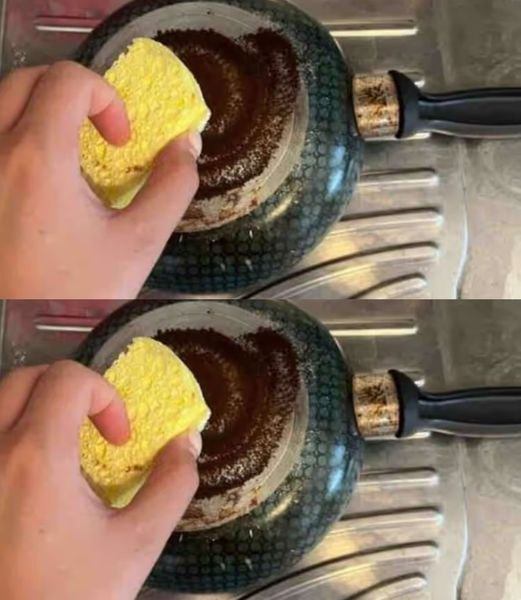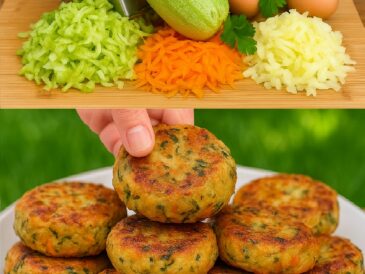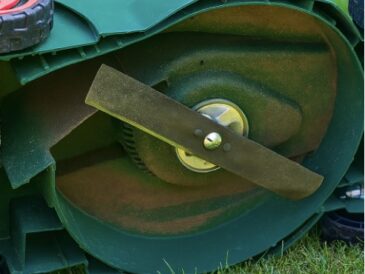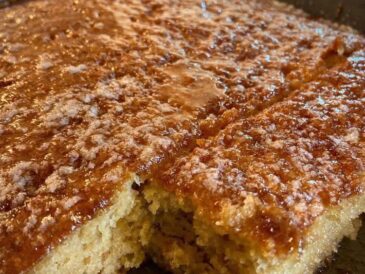Has your beloved skillet seen better days? If you’re like many home cooks, you’ve probably faced the frustration of discovering that your favorite pan has developed unsightly burnt stains and residue. Commercial cleaners can be expensive and filled with harsh chemicals, but what if we told you that you could restore your old pan without spending a single euro? In this article, we’ll delve into practical, natural, and cost-effective methods that will transform your burnt pan, making it usable again.
Understanding the Problem: Why Pans Get Burnt
Before we jump into the restoration techniques, it’s essential to understand why pans burn in the first place. Various reasons can contribute to a burnt pan, including:
- High Heat: Cooking at excessively high temperatures can cause food to stick and burn.
- Type of Food: Foods high in sugar can easily caramelize and stick to the bottom of the pan.
- Lack of Oil or Butter: Not using enough fat can lead to sticking and burning.
- Long Cooking Times: Leaving food unattended for a longer period increases the risk of burning.
By understanding these factors, you can take preventive measures next time you cook. Now, let’s explore how to bring that old pan back to life!
Natural and Inexpensive Restoration Tips
1. Baking Soda Paste
Materials Needed:
- Baking soda
- Water
Method:
- Mix three parts baking soda with one part water to create a thick paste.
- Apply the paste generously over the burnt areas of the pan.
- Let it sit for about 30 minutes to allow the baking soda to lift the burnt residue.
- Use a sponge or scrubber to gently scrub the surface. The mild abrasiveness of baking soda helps to remove stains without scratching the pan.
- Rinse with warm water and wipe dry with a clean cloth.
2. White Vinegar Soak
Materials Needed:
- White vinegar
- Water
Method:
- Fill the pan with equal parts water and white vinegar until the burnt area is submerged.
- Bring the mixture to a boil over medium heat. The heat combined with the acidity of the vinegar will help loosen the burnt food.
- Remove the pan from heat and let it cool slightly.
- Use a non-abrasive sponge to scrub the burnt spots gently.
- Rinse thoroughly with warm water and dry.
3. Salt Scrub
Materials Needed:
- Coarse salt
- Lemon or lime
Method:
- Sprinkle a generous amount of coarse salt over the burnt areas of your pan.
- Cut a lemon or lime in half and use the fruit to scrub the salt into the affected areas. The acidity from the citrus and the abrasiveness of salt work together to lift the stains.
- Once the burns have lifted, rinse the pan with warm water.
- Dry it thoroughly to prevent rust forming on metal pans.
4. Cream of Tartar
Materials Needed:
- Cream of tartar
- Water
Method:
- Mix a few tablespoons of cream of tartar with enough water to form a paste.
- Apply the paste to the burnt areas of the pan and let it sit for about 30 minutes.
- Scrub gently with a soft cloth or sponge.
- Rinse with warm water and dry.
5. Potato Power
Materials Needed:
- Raw potato
- Coarse salt or baking soda
Method:
- Cut a raw potato in half and dip the cut side into coarse salt or baking soda.
- Use the potato to scrub the burnt areas of the pan. The starch in the potato helps lift grime, while the abrasiveness of salt or baking soda aids in scrubbing.
- Rinse the pan and dry thoroughly.
6. Dish Soap and Hot Water Soak
Materials Needed:
- Dish soap
- Hot water
Method:
- Fill the burnt pan with hot water and add a few drops of dish soap.
- Let it soak for at least an hour or overnight for tougher stains.
- After soaking, use a non-abrasive sponge to scrub the burnt areas. This method works particularly well for greasy burns.
- Rinse and dry.
7. The Aluminum Foil Trick
Materials Needed:
- Aluminum foil
Method:
- Crumple a piece of aluminum foil into a ball (make sure it is not too tightly packed).
- Use the foil ball to scrub the burnt areas of the pan gently. The foil acts as an abrasive cleaner and can lift burnt residue.
- Rinse the pan afterward and dry it.
Additional Tips for Specific Pan Types
For Cast Iron Pans
Restoration methods for cast iron pans differ due to their porous nature:
- Salt Scrub: Use coarse salt and a little water to scrub the surface, then rinse and dry thoroughly.
- Re-seasoning: After cleaning, apply a thin layer of vegetable oil and heat the pan upside down in the oven to restore its seasoning.
For Non-Stick Pans
Take care with non-stick coatings:
- Baking Soda Paste: Use cautiously, as abrasive scrubs can damage the coating.
- Gentle Soaking: A mixture of warm water and dish soap should do the trick without damaging the surface.
For Stainless Steel Pans
Stainless steel can handle a bit more abrasiveness:
- Baking Soda or Vinegar: Both of these are effective, as stainless steel is durable.
- Boil Water and Baking Soda: For tough stains, a boiling mixture of water and baking soda in the pan can be very effective.
Preventative Care: Keeping Your Pans in Good Condition
Now that you know how to restore your burnt pans, let’s talk about some preventative measures to keep them in tip-top shape:
Use the Right Utensils
- Avoid metal utensils in non-stick pans, which can scratch the surface and lead to burns.
- Use wooden or silicone spatulas for delicate coatings.
Maintain Appropriate Heat Levels
- Start cooking at medium heat and adjust as needed. High heat can lead to burnt food and pans.
Clean Immediately
- Soak your pans after cooking, allowing burnt food to loosen before it hardens. The sooner you clean, the easier it will be.
Invest in Quality Cookware
- If you find yourself burning pans frequently, consider investing in quality cookware that can withstand high heat and is less prone to sticking.
Conclusion
Restoring an old burnt pan doesn’t have to break the bank—by using simple, natural ingredients you probably already have at home, you can revitalize your cookware without spending a euro. Whether it’s baking soda, vinegar, or potatoes, each method offers a reliable and eco-friendly solution to rejuvenating your kitchen essentials.
Adopting these restoration techniques will not only save you money but also contribute to a more sustainable lifestyle by prolonging the life of your cookware. Make it a habit to practice proper care techniques to prevent future burns, ensuring your pans remain in top condition for all your culinary adventures!
With these tips at your disposal, your once burnt and forgotten pans can once again become invaluable kitchen companions, ready to help you create delicious meals for years to come. So roll up your sleeves and get to work—your cookware deserves a second chance!




